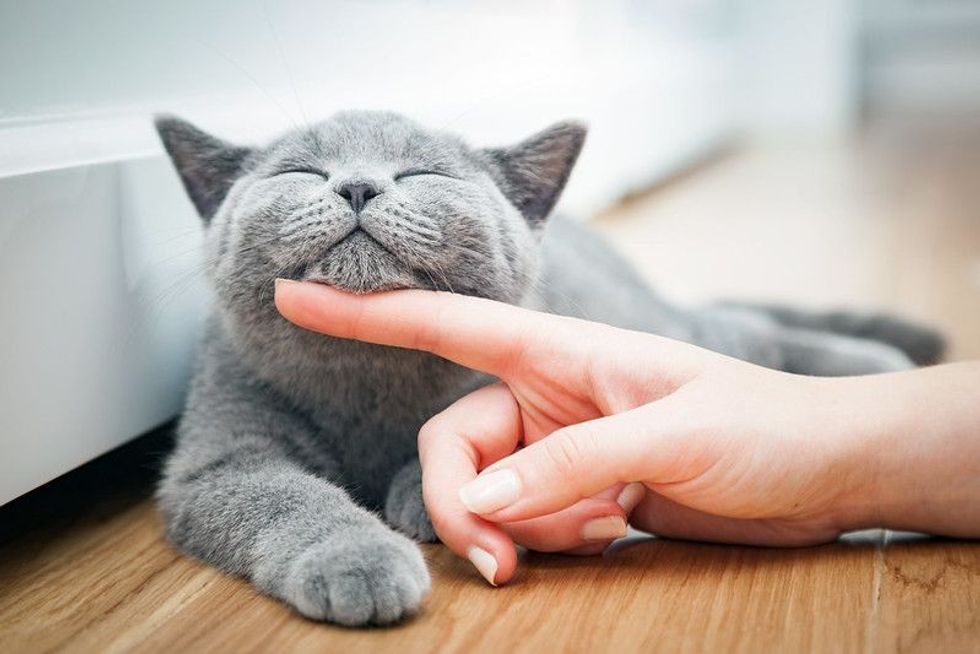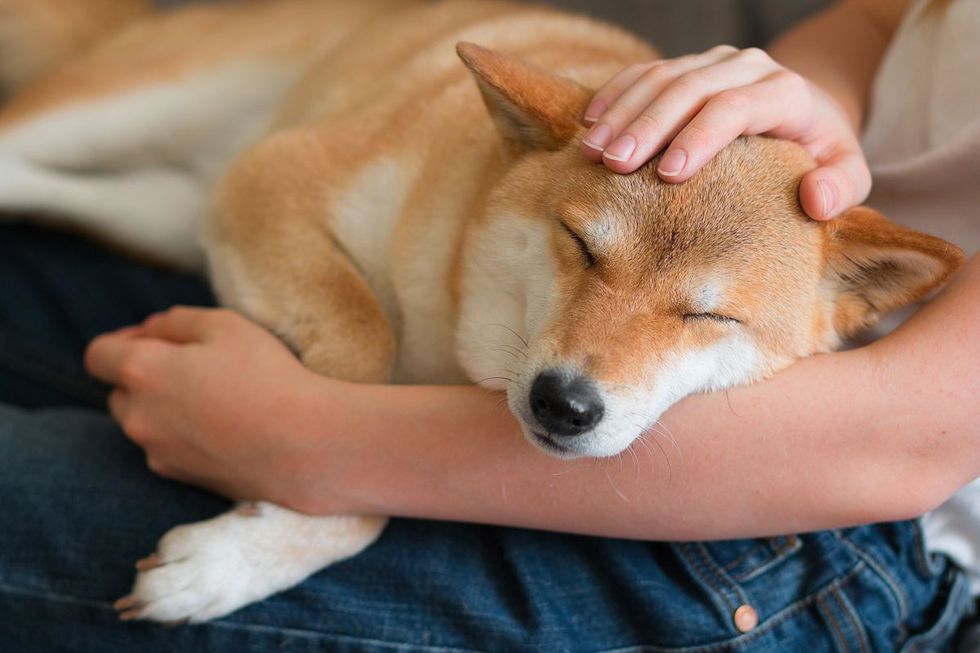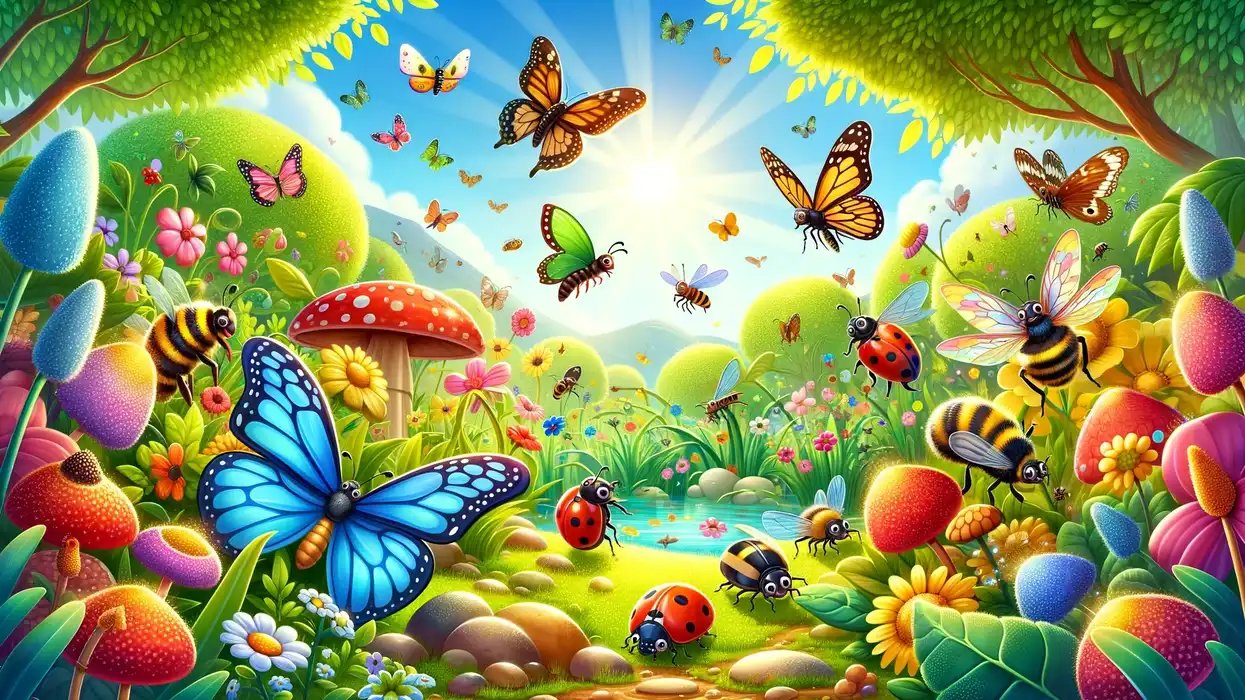Have you ever wondered why your furry friends love being petted so much? From cats and dogs to horses and even some wild animals, it seems that many creatures enjoy a gentle touch from humans. But what is it about petting that makes animals feel so good?
In this article, you'll take a closer look at the science behind why animals like being petted and what it means for their well-being. You'll also learn about the different ways animals respond to petting, the benefits it can bring, and even some tips on how to pet your animal friends in a way they'll love.
If you're a pet owner, an animal lover, or someone just curious about this animal behavior, you can look forward to learning a lot!
The Science Behind Touch: How Petting Affects Animals
 Why Do Animals Like Being Pet? Animal Petting Explained!Shutterstock
Why Do Animals Like Being Pet? Animal Petting Explained!ShutterstockHave you ever noticed how much animals love petting? It turns out there's a lot of interesting science happening beneath the surface when you pet an animal. In this section, you'll learn about the ways an animal's body responds to touch and what role hormones like oxytocin and endorphins play in making them feel good.
- When you give animals a gentle pet, something cool happens inside their bodies; they release a special substance called oxytocin.
- Oxytocin is sometimes called the 'love hormone' or 'cuddle hormone'. These feel-good hormones help them feel happy and close to others, just like when you get a big, warm hug from someone you care about.
- When you pet animals, not only does it make them feel loved, but it also kicks off a little party in their body with something called endorphins. Endorphins are like tiny superheroes that fight off pain and bring in lots of happiness.
- It's as if every gentle stroke you give them sends out a team of superheroes to help the animal feel super good and super comfy. Just imagine, with every pat and scratch, you're making them feel like they're on top of the world.
- When you pet animals, not only do they get a boost of the 'love hormone' oxytocin, but you do too! This means both you and your furry friend are sharing a special moment that makes each of you feel happier and more loved.
- Petting an animal is like a magical exchange where both of you are getting a big, warm hug at the same time. So, the next time you're snuggling up with a pet, remember, that it's not just fun for them, it's great for you too.
- Did you know that when you pet a dog, it's not just their tail that gets wagging? Something amazing happens in your brain too! There's a special part of your brain called the prefrontal cortex, which helps you with feelings and making friends.
- When you stroke a dog, this part of your brain lights up like a mini fireworks show. It gets super active and helps you feel even more connected and friendly. So, every time you're petting a dog, you're not just making them happy, you're also giving your brain a joyful little boost.
- When you pet animals, they can feel it. This helps them understand that touch can be soothing and not just something that might hurt them.
- Being close to humans and getting petted can make an animal's brain release serotonin, a happy chemical that helps them feel good and steady.
- Petting animals doesn't just make them feel better for a little while; it supports their happiness and health over the long haul, helping them be well and content.
- Hanging out and petting animals can lower cortisol, the stress hormone, in both you and the animal. It's like pressing a big red 'stress off' button for both of you.
Animal Species-Specific Petting Preferences

Every animal is unique, and they all have their favorite ways to be petted. This can depend on things like where their nerves are and how they've interacted with people before. What feels good to one animal might not feel good to another. Here you'll learn about the various petting methods.
- Most dogs love gentle petting on their chest, shoulders, and the base of their neck. These gentle touches can help reduce stress and make them feel relaxed.
- Cats enjoy being petted along their spine from head to tail, and around their cheeks and chin. Remember, each cat has a unique personality, so pay attention to their body language to see what they like best.
- Rabbits, like many animals, appreciate gentle stroking on their foreheads and backs. Petting rabbits gently can have a calming effect, but they might not enjoy being picked up or held tightly.
- Many birds, despite not being hairy animals, still enjoy the pleasant sensation of being gently stroked on their heads and necks. Just be extra gentle and avoid sudden movements that might startle your feathered friends.
- Horses, like humans, appreciate physical contact and gentle touches. They often enjoy being petted on their necks and chests, but make sure to approach them from the side to avoid surprising them.
- Guinea pigs, like many small mammals, love gentle strokes along their backs. Their hairy skin is sensitive, so be extra gentle and avoid petting their underside.
- Ferrets are playful social animals who enjoy gentle scratching behind the ears and along their backs. For these furry friends, petting might seem like an invitation to play and have fun!
- Hamsters, despite their small size, still enjoy the pleasant sensation of being petted gently along their backs. Just remember to be very gentle and don't handle them too much, as they can easily become stressed.
- Chinchillas have incredibly soft fur and sensitive skin, so they prefer light, gentle stroking on their backs and sides. Petting these furry friends is like touching a soft, fluffy cloud!
- Most lizards, while not typically hairy animals, can still tolerate gentle strokes on the head and along the back if they are used to human interaction. However, always be careful and watch their body language, as they can be unpredictable.
- Snakes, like lizards, don't particularly enjoy petting, but they can tolerate gentle handling if done calmly and securely. Remember to avoid quick movements that could startle your slithery friends.
- Turtles may enjoy having their shells gently rubbed, which can be a pleasant sensation for them. While they might not seek out physical touch like some other pets, they can get used to it over time with patience and gentle care.
- Parrots, like many birds, often enjoy being scratched gently on their heads and necks. Just like humans, they appreciate affection and positive reinforcement, but be sure to watch their body language to avoid any accidental bites.
- Fish, while not animals that can be petted like furry friends, can still bring a calming effect to humans who watch them. Remember, though, that fish don't like to be touched, as it can remove their protective slime coating.
- Hedgehogs, with their unique personalities, may enjoy being gently stroked on their quills if they feel relaxed and unafraid. Use gentle touches to avoid startling these prickly pals.
- Pigs, much like humans, enjoy belly rubs and scratches behind the ears. These intelligent and social animals often seek out human interaction when they feel comfortable and safe.
- Goats, being social animals, appreciate gentle petting on their heads and backs. They often enjoy human company and the pleasant sensation of physical touch.
- Sheep, similar to their goat friends, enjoy being stroked on their backs and sides. While they might not always seek out petting, they can still enjoy the calming effect of human interaction in a peaceful environment.
- Cows, the gentle giants of the animal world, may enjoy scratches on their heads and around their necks. They appreciate calm and gentle handling, just like many other mammals.
- Alpacas, with their soft, hairy skin, prefer being touched on their backs and sides. While they might not enjoy petting their heads as much, gentle stroking can still be a pleasant sensation for these unique animals.
Why You Should Not Pet Wild Animals

While it might be tempting to reach out and touch a cute wild animal, it's important to remember that they're not used to human interaction like other pets are. In this section, you'll learn about expert advice and what researchers have to say about why you shouldn't pet wild animals.
- It's important to remember not to pet wild animals because they aren't used to human interaction or body language and might get scared or react in surprising ways. It's best to enjoy watching them from a safe distance.
- Petting wild animals might seem fun, but it can be risky because it's possible to catch diseases from them that can spread from animals to people. So, it's always safer to admire them from afar.
- Wild animals might act aggressively to protect themselves if they feel scared or threatened. Petting them can make them feel this way, so it’s best to give them their space and watch them from a distance.
- Approaching or trying to pet wild animals, especially moms with their babies, can make them feel protective and react strongly to keep their little ones safe. It's best to watch them quietly from far away to keep everyone safe and happy.
- Interacting with wildlife, like trying to pet them, can cause bigger problems than you might think. It doesn't just upset the individual animals, but it can also affect whole species and the places they live.
- In lots of places, it's actually against the law to touch or interact with wild animals, and if you do, you could end up having to pay a fine or face other legal troubles. It's really important to respect these rules to keep both you and the wildlife safe.
FAQs
Why do some animals like their ears or heads being petted more than other areas?
Animals have different sensitive spots on their skin, and many of them like it when their head and ears are gently petted because they have lots of nerve endings there. But it's super important to watch how they react when you pet them.
If they seem happy and relaxed, that's great! If not, it's best to give them some space. Always make sure they're enjoying the interaction just as much as you are!
Can petting help an animal's health?
Just like humans, animals can get a lot of health benefits from being petted! It can help lower their blood pressure, reduce levels of stress hormones, and make them feel happier overall.
So when you take the time to gently pet your animal friends, you're doing something good for their health and happiness.
Why do pets sometimes initiate petting?
Pets, like dogs and cats, sometimes show they want some love by nudging your hand or sitting close to you.
This cute behavior means they're looking for some social interaction, affection, and the good feelings that come from being petted. It's their way of saying, 'Hey, I want to hang out and feel cozy with you!"
Petting is more than just a fun activity; it's a special way you talk to your animal friends without using words. When you pet them, it's not only enjoyable for them but also for you. You can see the joy in a dog's wagging tail or hear it in a cat's purr when they feel happy and loved.
Petting can calm nerves, show friendship, and strengthen the bond you share with your furry, feathered, or even scaly pals.
Related Articles Around the Web




 Why Do Animals Like Being Pet? Animal Petting Explained!Shutterstock
Why Do Animals Like Being Pet? Animal Petting Explained!Shutterstock






